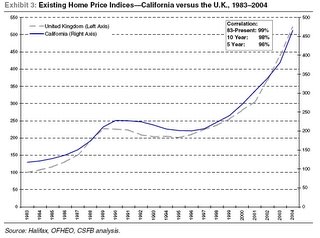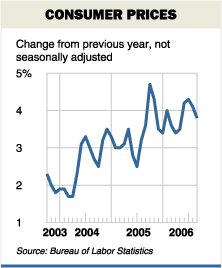End of Housing SlumpSeems to Be Drawing Near
WASHINGTON -- Recent firmness in mortgage applications and an increase in new-home sales suggest the housing slump may be nearly over, limiting the risk of wider damage to the overall economy.....
....The four-week moving average for the MBA's purchase index, which offers a less-volatile picture of the trend, has risen 12% since August, while the four-week average for the group's refinancing index has soared more than 41% since July....
....A recent pickup in new-home sales also points to stabilizing demand. The Commerce Department said yesterday that new-home sales rose 3.4% in November to an annual rate of 1.05 million units. While that pace is down more than 15% from a year earlier, it has risen since July and has held fairly steady in recent months.....
..."The net of all the numbers we've gotten is that it looks like the housing market and home sales appear to have stabilized, at least temporarily, in the latter part of the year," said Thomas Lawler, a former economist for Fannie Mae who now runs a consulting firm in Vienna, Va.
...Last month, there were 545,000 new homes on the market, or the equivalent of a 6.3-month supply at current sales rates, according to the Commerce data, down from a recent high mark of a 7.2-month supply in July.....Christopher Conkey - WSJ














